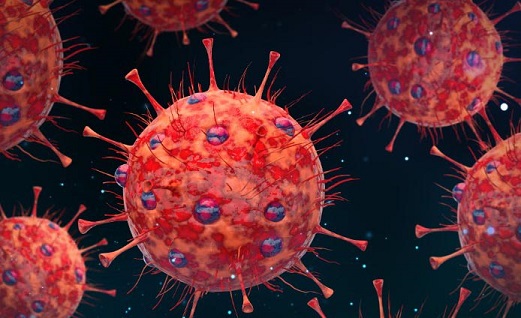Forget about the KP.3, LB.1, KP.2.3 variants. The new SARS-CoV-2 KP.3.1.1 is leading the current global COVID-19 surge
Nikhil Prasad Fact checked by:Thailand Medical News Team Jul 21, 2024 8 months, 3 weeks, 2 days, 3 hours, 24 minutes ago
COVID-19 News: The world of virology has been buzzing with new discoveries, and the latest addition to the COVID-19 family is the KP.3.1.1 variant. This variant has shown significant virological differences compared to its predecessors, making it a topic of great interest. This
COVID-19 News report delves into the key findings of a study conducted by researchers from various prestigious institutions, providing an easy-to-understand overview of what makes KP.3.1.1 unique and why it matters.
 Forget about the KP.3, LB.1, KP.2.3 variants. The new SARS-CoV-2 KP.3.1.1 is leading the current global COVID-19 surge
A New Player in the Pandemic
Forget about the KP.3, LB.1, KP.2.3 variants. The new SARS-CoV-2 KP.3.1.1 is leading the current global COVID-19 surge
A New Player in the Pandemic
As we navigate through the ongoing pandemic, new variants of the SARS-CoV-2 virus continue to emerge. One such variant, named KP.3.1.1, has recently caught the attention of scientists due to its distinctive characteristics. Researchers from the University of Tokyo, Sophia University-Japan, Kumamoto University-Japan, and the University of Glasgow-UK have been at the forefront of studying this variant.
The Rise of KP.3.1.1
The KP.3.1.1 variant, also known scientifically as JN.1.11.1.3.1.1, is a subvariant of the JN.1 lineage (BA.2.86.1.1). This lineage has been evolving rapidly, giving rise to several subvariants, including KP.2, KP.3, and LB.1. What sets KP.3.1.1 apart is a specific mutation known as S:S31del, a deletion of Serine at the 31st position in the spike protein of the virus. This mutation appears to confer significant advantages in terms of transmission and immune evasion.
Understanding the Reproductive Number
One of the critical measures in virology is the effective reproduction number (Re), which indicates how many people, on average, one infected person will pass the virus to. For KP.3.1.1, the Re is notably higher than that of its predecessors. Using a Bayesian multinomial logistic model, researchers found that in countries like Spain, the USA, France, Canada, and the UK, KP.3.1.1 had an Re over 1.2 times higher than the original JN.1 variant. This higher Re suggests that KP.3.1.1 has a greater potential to spread rapidly and widely.
Enhanced Infectivity
Another significant finding is the increased infectivity of KP.3.1.1. Using pseudoviruses, which are laboratory-created versions of the virus, researchers tested the infectivity of KP.3.1.1 compared to KP.3. The results were striking: KP.3.1.1 showed significantly higher infectivity. This means that KP.3.1.1 can enter and infect human cells more efficiently than its predecessor.
Neutralization Resistance
The ability of a virus to evade the immune system is a crucial factor in its spread and severity. Researchers tested how well KP.3.1.1 could be neutralized by different sera - blood samples containing antibodies - from individuals who had recovered from various COVID-19 infections or who had been vaccinated. They found that KP.3.1.1 had a significantly lower neutralization tit
er (NT50) compared to KP.3 across all sera tested. This lower NT50 indicates that KP.3.1.1 is more resistant to neutralization by antibodies, making it harder for the immune system to fight off the infection.
Implications for Vaccination
One of the critical concerns with new variants is how well existing vaccines can protect against them. The study found that the KP.3.1.1 variant showed a 1.3-fold lower NT50 against sera from individuals vaccinated with the XBB.1.5 monovalent vaccine. This suggests that KP.3.1.1 has a better chance of evading the immunity provided by the current vaccines.
The Broader Picture
The emergence of KP.3.1.1 highlights the virus's ability to adapt and evolve and exhibit enhanced transmission and immune evasion. This evolutionary advantage underscores the importance of continuous monitoring and research to stay ahead of the virus's changes.
KP.3.1.1 Also Spawning Numerous Sub-Lineages That Could be Problematic
Thailand Medical News would like to add that the new KP.3.1.1 variant is also spawning numerous new sub-lineages and there are some speculations that has yet to be validated that these new sub-lineages can even evade immunity generated by previous infections involving the KP.3 and even the KP.3.1.1 variants themselves!
Conclusion
The study on KP.3.1.1 provides valuable insights into how this variant behaves and its potential impact on public health. The higher reproduction number, increased infectivity, and greater resistance to neutralization all point to KP.3.1.1 being a variant of concern. As scientists continue to study this variant, it will be crucial to adapt our strategies in vaccination, treatment, and public health measures to mitigate its spread.
The study findings were published on a preprint server and are currently being peer reviewed.
https://www.biorxiv.org/content/10.1101/2024.07.16.603835v1
For the latest
COVID-19 News, keep on logging to Thailand Medical News.
Read Also:
https://www.thailandmedical.news/news/breaking-news-besides-kp-3-another-newly-emerged-sars-cov-2-variant-lb-1-poses-a-major-threat-in-coming-months
https://www.thailandmedical.news/news/somnolence-and-shingles-seems-to-be-new-symptom-manifestation-of-covid-19-kp-3-and-lb-1-infections
